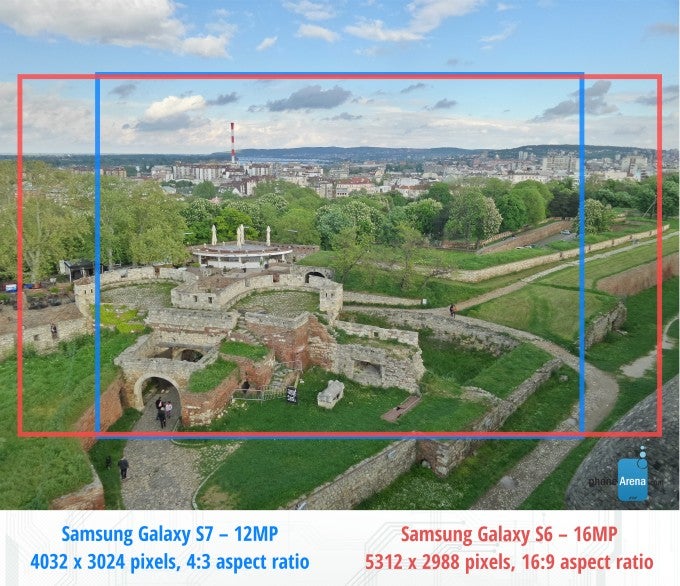Here's why the drop in resolution between the 12MP/16MP cameras of the Galaxy S7 and S6 doesn't matter

In short, within the next few paragraphs, we'll try and explain why despite the lower resolution, the images you'll be getting from the Galaxy S7 will be of comparably high definition as those from the supposedly superior (in this particular area) sensor of the Galaxy S6, without a corresponding 25% dip in clarity.
The theory behind it all
So what sorcery allows the 12-megapixel unit of the Galaxy S7 to essentially match the 16-megapixel snapper of the Galaxy S6 in terms of detail depth? It's actually exceedingly simple, though you might need a few seconds to wrap your head around it: the S7 has a 4:3 aspect ratio sensor, while the Galaxy S6's is a 16:9 unit. To aid your understanding, we offer you a simplified visual representation of what that means:

In this instance, the outlined blue and red rectangles are representations of the physical form of the two phone's respective camera sensors, and the part that gets illuminated through the lens by light. It's important to note that we haven't taken focal length into account in this example. As you can see, for the most part, the two are overlapped, with the exception of two slices on the top/bottom and left/right sides. And that's exactly the point: those extra 4 megapixels you get with the Galaxy S6 are, for the most part, distributed on the left and right, or horizontally, giving you a wider view of the composition in front of you. They don't mean that you're getting better detail at any point within the overlapping area.
However, the Galaxy S6 does have a longer focal length of 28mm versus 26mm for the Galaxy S7 (35mm equivalents). In practice, this means that if you're shooting from the same spot, the subject will appear more zoomed in on the S6 than on the S7, and you'll see a slight advantage in detail. If you correct for this, however, by taking a small step forward with the S7 in order to even the playing field, you'll see that there's no notable loss in detail with the new 12MP unit—and certainly not a corresponding one given the sizable drop in resolution.
Jump into the gallery below, where we've sliced a number of stills taken with both the Galaxy S7 and S6, under identical conditions. As you'll quickly find out, there's no notable loss of detail despite the lower resolution camera of the new flagship. For the most part, you're simply getting 4 megapixels worth of information on in width with the Galaxy S6.
Follow us on Google News












Things that are NOT allowed:
To help keep our community safe and free from spam, we apply temporary limits to newly created accounts: